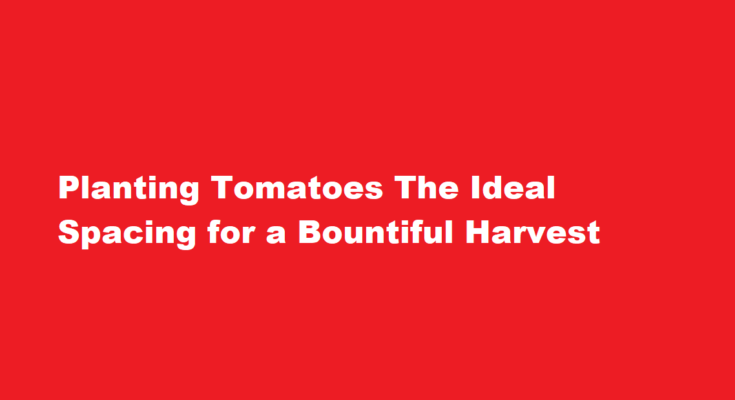Introduction
Tomatoes are a staple in many gardens, cherished for their versatility in culinary delights and vibrant colors. To ensure a successful tomato harvest, proper spacing when planting is essential. The distance between tomato plants can greatly impact their growth, health, and overall yield. In this article, we will explore the factors to consider when deciding how far apart to plant tomatoes and why the right spacing matters for a thriving tomato garden.
Factors Influencing Tomato Spacing
The ideal spacing for tomato plants can vary depending on several factors
1. Tomato Variety Different tomato varieties have varying growth habits. Determinate varieties tend to be more compact and bushy, while indeterminate varieties grow tall and require more space. Consider the specific variety you are planting.
2. Garden Space The available space in your garden or planting area will dictate how close or far apart you can plant tomatoes. Proper spacing is essential to prevent overcrowding, which can lead to disease and reduced yields.
3. Support Systems If you plan to use stakes, cages, or trellises to support your tomato plants, you may space them closer together than if you were allowing them to sprawl on the ground. Vertical gardening methods can allow for tighter spacing.
4. Climate In areas with hot, dry climates, you may want to space your tomato plants slightly farther apart to reduce competition for water and nutrients. Conversely, in cooler climates, closer spacing can help provide some mutual warmth and wind protection.
Recommended Spacing Guidelines
The recommended spacing for tomato plants typically falls within the range of 18 to 36 inches (45 to 90 cm) between plants. Here are some general guidelines
1. Determinate Varieties These bushy varieties are often spaced 18 to 24 inches (45 to 60 cm) apart. They are suitable for smaller gardens or containers.
2. Indeterminate Varieties Taller and more sprawling, indeterminate varieties benefit from wider spacing, usually 24 to 36 inches (60 to 90 cm) apart. This spacing allows for adequate airflow and sunlight penetration.
3. Rows If planting in rows, space the rows 3 to 4 feet (90 cm to 1.2 meters) apart. This facilitates easy access for maintenance and harvesting.
4. Vertical Gardening When using trellises or stakes, you can space indeterminate varieties as close as 18 to 24 inches (45 to 60 cm) apart, provided you provide adequate support for upward growth.
Importance of Proper Spacing
1. Air Circulation Proper spacing promotes air circulation between plants, reducing the risk of fungal diseases like blight and allowing leaves to dry quickly after rain.
2. Sunlight Exposure Adequate spacing ensures that each plant receives sufficient sunlight, which is crucial for photosynthesis and fruit ripening.
3. Nutrient Uptake Spacing prevents overcrowding, allowing each plant to access essential nutrients and water without competition.
4. Ease of Maintenance Well-spaced plants are easier to care for, prune, and harvest, leading to a more productive and enjoyable gardening experience.
FREQUENTLY ASKED QUESTIONS
How big do tomatoes transplant?
Generally, the right time to transplant is when your tomato plant reaches three times the height of its container. So if you’re moving from a 4-inch pot to the next size up, wait until your plant is 12 inches tall so there’s enough stem length to bury.
What fertilizer do tomatoes love?
Some growers prefer to use a high-phosphorus fertilizer, indicated by a larger middle number. You can also keep things simple with a fertilizer especially formulated for tomatoes – usually with a ratio like 3-4-6 or 4-7-10. Most importantly, don’t over-fertilize. Too little fertilizer is always better than too much.
Conclusion
When it comes to growing healthy and productive tomato plants, proper spacing is a fundamental factor to consider. Tailoring your spacing to the specific tomato variety and the conditions in your garden will help you maximize your harvest. By allowing for adequate air circulation, sunlight exposure, and nutrient uptake, you’ll create an environment where your tomatoes can thrive. So, whether you’re a seasoned gardener or just starting out, remember that the right spacing for your tomato plants can make a significant difference in the quality and quantity of your homegrown tomatoes.
Read Also : Mastering The Art of Drawing Goku A Step-by-Step Guide



